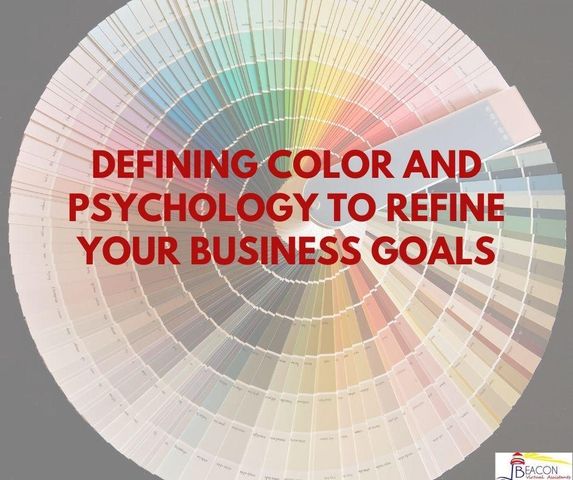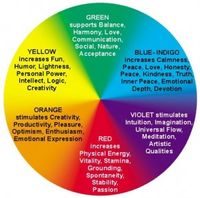
Color Psychology + Business
Did you know that the colors you choose for your business can increase your chance of reaching your business goals? The colors you choose gets your audience to do what you want them to do, to see what you want them to see, and to feel what you want them to feel. However, poor color choice can negatively impact your business. Color greatly influences human emotion and behavior.
Color + Theory
The primary colors are the three colors that make all other colors. The primary colors are RED, BLUE, and YELLOW. The primary colors are mixed to make secondary colors. The secondary colors are PURPLE, GREEN, and ORANGE. The primary  and secondary colors are mixed to make tertiary colors. The tertiary colors are given two names. These are colors such as RED-PURPLE or YELLOW-GREEN. Primary, secondary, and tertiary colors are considered pure colors, if and only if, they do not contain any white, black, or a third color. If white is added to a pure color, then you create a tint. If black is added to a pure color, then you create a shade. Gray is black and white mixed. If gray is added to a pure color, then you create a tone. Cool colors include all the blues and greens. Warm colors include all the yellows and reds.
and secondary colors are mixed to make tertiary colors. The tertiary colors are given two names. These are colors such as RED-PURPLE or YELLOW-GREEN. Primary, secondary, and tertiary colors are considered pure colors, if and only if, they do not contain any white, black, or a third color. If white is added to a pure color, then you create a tint. If black is added to a pure color, then you create a shade. Gray is black and white mixed. If gray is added to a pure color, then you create a tone. Cool colors include all the blues and greens. Warm colors include all the yellows and reds.
Color + Psychology
Color is essential because it has an impact on human emotion and behavior. It puts content into context. Color helps people  recognize your brand. It is important to research color choices and choose carefully. Some colors are passive while other colors are active. There are generalities about color and how people respond. One example is green can spark creativity. Another example is blue is most excepted. Remember that the psychological impact of color is subjective. We do not all react to color choices the same. However, you can test your color choices by running advertisements and recording which advertisements your audience respond to.
recognize your brand. It is important to research color choices and choose carefully. Some colors are passive while other colors are active. There are generalities about color and how people respond. One example is green can spark creativity. Another example is blue is most excepted. Remember that the psychological impact of color is subjective. We do not all react to color choices the same. However, you can test your color choices by running advertisements and recording which advertisements your audience respond to.
Color + Words
Color is also used when we speak about your business. You may or may not realize you use color idioms. There are common phrases that are used each and every day. One example is black and white. If you call something black and white, then you are implying that it is straight forward and very clear. Another example is green with envy. If you are green with envy, then it implies you are jealous. Maybe you are as red as a beet, because you didn’t realize how often you use color in conversation.
Color helps to create your brand identity. It makes your business visible in the crowded marketplace, helps you attract new customers, and keep the existing ones. Color is fascinating to study, from both a theory and psychology standpoint!
About the Business
Have a question? Ask the experts!
Send your question

